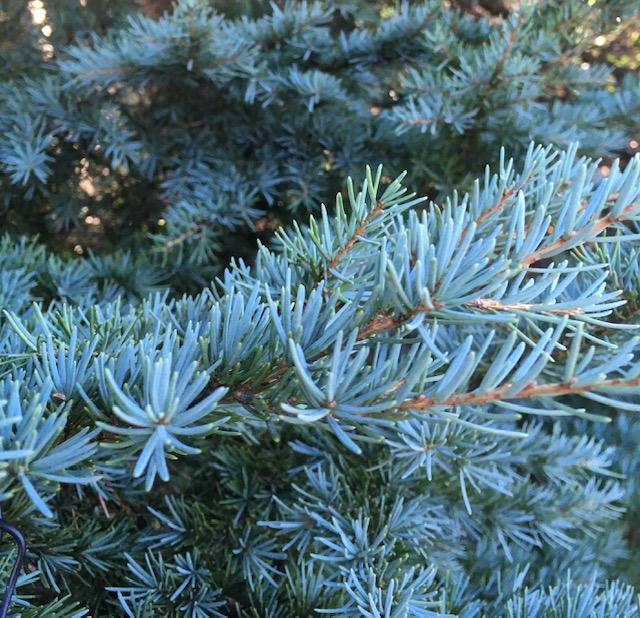- Plant IDs
- >
- ID By Type
- >
- Trees
- >
- Evergreen Trees
- >
- Conifers
- >
- Tsuga mertensiana
Tsuga mertensiana
It is easy to forget there is another hemlock growing in British Columbia - mountain hemlock (Tsuga mertensiana). This tree grows in the mountains from mid elevation to timberline, unlike the more familiar western hemlock (Tsuga heterophylla) at low elevations. It can be difficult to tell the two species apart, but looking at the needles first really helps.
While western hemlock has nearly flat needles of different lengths, mountain hemlock’s bluish-green needles are the same length and arranged in a bottlebrush fashion. The colour of blue conifers is caused by a special layer of wax on the needles that reflects particular wavelengths of light. That’s why a blue conifer often appears to be a different shade in spring/summer light than in the darker autumn/winter light. The glaucous wax of its needles also acts as a sunblock to protect the trees from intense sun. Most blue-toned conifers have evolved in areas of very high sunlight.
Also, the tips of mountain hemlock tend to sweep upwards, and its leader (top) only drops slightly. But when it’s winter, mountain hemlock goes into all kinds of disguises. It can withstand months of being covered in snow. Its trunk is so flexible that trees bend under the weight of the snow. This creates a grove of cartoon figures - heads bent and trudging on like the seven dwarves.
Although mountain hemlock can grow to 40 m/120 ft, it is often stunted at high elevations or under certain soil conditions. If it is growing in a thick grove, the lower branches may appear to be the branches of western hemlock, with the needles flattening out. Mountain hemlock is not a strict follower of ID tips. It is a bit of a trickster tree, but that keeps it surviving. Meanwhile Sooty Grouse eat its buds and leaves, while the squirrels make caches of its cones in snow. They are never fooled.
Because of its habitat, it is less likely to burn.
Text and most photos by Hughie Jones.
The tree pictures are from our Cascadia Garden and the BC Habitat Garden. The winter picture is from Native Plants PNW site.





